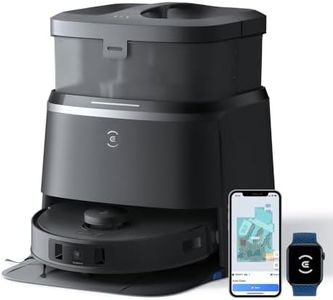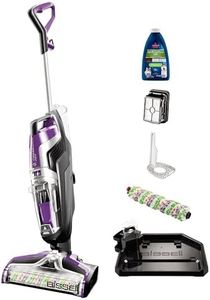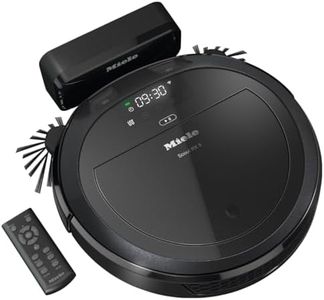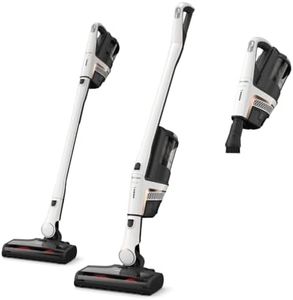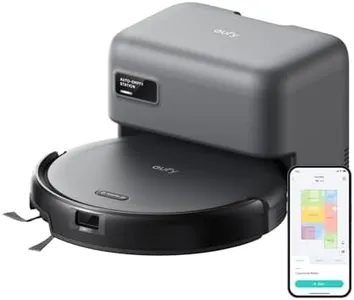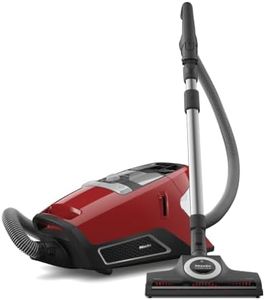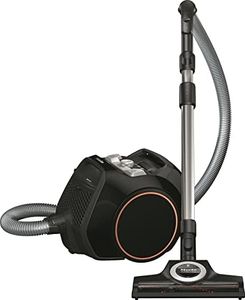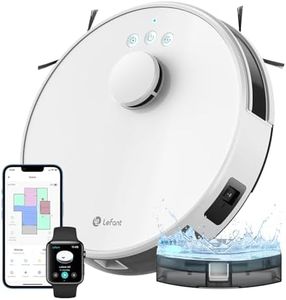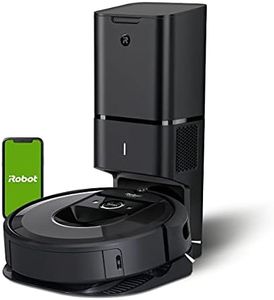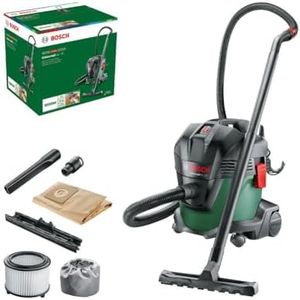We Use CookiesWe use cookies to enhance the security, performance,
functionality and for analytical and promotional activities. By continuing to browse this site you
are agreeing to our privacy policy
10 Best Small Vacuum Cleaners
From leading brands and best sellers available on the web.Buying Guide for the Best Small Vacuum Cleaners
Choosing the best small vacuum cleaner for your home involves thinking about your cleaning needs, the type of surfaces you have, and how you plan to use the vacuum. Small vacuums are perfect for quick clean-ups, small apartments, dorm rooms, or as a secondary cleaner in bigger homes. When shopping for a small vacuum, focus on portability, ease of use, and whether it meets your primary cleaning demands. Understanding the key specs will help you pick a model that is efficient, convenient, and fits seamlessly into your lifestyle.Suction PowerSuction power tells you how effectively a vacuum can pick up dirt and debris. It's an important measure, as stronger suction cleans more thoroughly, especially on carpets and rugs. Small vacuums can have lower suction than full-size ones, but many are designed to balance size and performance. Typically, suction power is measured in air watts or kPa. For mostly hard floors or light messes, lower suction is often fine. If you have pets, thicker carpets, or need more versatility, look for models toward the higher end of suction. Think about the type of dirt you deal with most to guide your choice.
Weight and SizeThe appeal of a small vacuum is its convenience, so weight and size are crucial. Lighter models are easier to carry upstairs, move around furniture, and store in tight spaces. Small vacuums can range from compact handhelds weighing under 3 pounds to stick vacuums that might be a bit heavier. If you need something for quick spot cleaning or cars, very light and compact models make sense. If you want to clean multiple rooms or larger areas, you might choose a slightly heavier but still manageable stick vacuum.
Corded vs CordlessSmall vacuums come in both corded and cordless versions. Corded models offer unlimited run time but can be less convenient because of the cord, which may restrict movement or require changing outlets. Cordless vacuums are powered by a rechargeable battery, which makes them more flexible and portable, especially useful for cars, stairs, or multi-level cleaning. However, batteries only last for a set time, often between 10 and 40 minutes before needing a recharge. Your choice depends on whether you value continuous power or maximum mobility.
Dust Bin CapacityThe dust bin is where your vacuum collects dirt. Smaller vacuums have smaller bins, meaning they'll need to be emptied more often. Bin capacity is usually measured in liters or ounces. For light, everyday cleaning or small spaces, a tiny bin might be fine. If you have pets, shed a lot of hair, or don’t want to empty the bin often, opt for the larger end of small-vacuum bin sizes. Think about how much debris you will typically collect and how often you want to empty the vacuum.
FiltrationFiltration refers to how well the vacuum traps dust, allergens, and fine particles. Good filtration is essential for people with allergies or asthma, as it keeps these particles from recirculating into the air. Some small vacuums come with HEPA filters, which capture very tiny particles, while others use basic foam or mesh filters. If air quality is a concern, look for small vacuums with more advanced filters. For quick spot cleaning and less frequent use, basic filtration usually suffices.
Attachments and VersatilityAttachments such as crevice tools, brush heads, or motorized pet tools can greatly expand what your vacuum can clean, from tight corners to upholstery and pet hair. Some small vacuums offer a range of attachments, while others are more minimalist. If you need to clean various surfaces or tackle tricky spots (like car interiors, furniture, or stairs), opt for a model with more accessory options. If you only need floor cleaning, fewer attachments may be just right.
